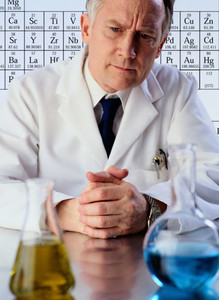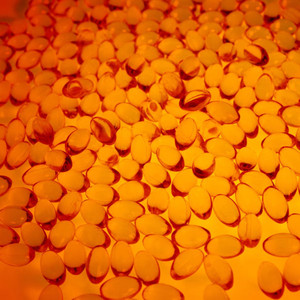With an EU regulatory framework in place to address the safety of biosimilars – also known as follow-on biologics (FOBs) – the opportunity represented by these products has been proven, and it is growing, as reported by Cynthia Challener in ICIS Chemical Business.
Biosimilars advancing along European approval path
Home/Policies & Legislation
|
Posted 04/09/2009
 0
0
Japan and the US are both following suit and exploring legislative development.
Over 10 biosimilars have been approved in Europe, using the EU's specially adapted approval procedure. In Japan, Sandoz has received marketing approval of Japan’s first therapeutic biosimilar, Somatropin BS, the recombinant human growth hormone somatropin. Sandoz also received market authorisation for Omnitrope in Canada, where it is the first biosimilar of a previously approved recombinant drug to be approved by Health Canada under ‘Information and Submission Requirements for Subsequent Entry Biologics’. In the US, a legislative pathway is also in sight.
Both generic drug manufacturers and large pharma companies are angling for a share of this expanding niche in the US$75 billion (Euros 60 billion) global market for biologicals.
Biologicals comprise the fastest-growing segment of the pharmaceutical market, according to US-based market research firm Decision Resources. Nearly one-quarter of the top 100 drugs in 2007 were biologicals, and 13 of them achieved mega-blockbuster status of more than US$2 billion (Euros 1.4 billion) in worldwide sales, says the firm. Many of these drugs will reach patent expiry within the next 10 years, driving interest in biosimilars.
Generic drug company Sandoz, a business unit of Swiss innovator Novartis, has already taken the lead with three biosimilars approved in Europe – Binocrit, Omnitrope and Zarzio. Sandoz also offers the only biosimilar on the US market. Approval of Omnitrope was possible, according to the US FDA, because the drug is relatively simple, well characterised and shown to be highly similar to Pfizer's branded drug Genotropin. It was not approved as a generic, but as a new drug under the Federal Food, Drug and Cosmetic (FD&C) Act, a pathway that would not be an option for most major biologicals.
Teva Pharmaceuticals, a leading generics producer, also intends to become a major player in biosimilars. It has one product on the European market (TevaGrastim) and has improved its biologicals capabilities through the recent acquisitions of Barr Pharmaceuticals and CoGenesys, both in the US. More recently, Israel-based Teva formed a strategic partnership with Swiss custom manufacturer Lonza to jointly develop, manufacture and market biosimilars. “Our complementary capabilities will facilitate the drive to secure a leading position in this market and enhance our ability to offer safe and price-effective biopharmaceuticals,” says Lonza’s Media Relations Manager, Mr Dominik Werner.
Teva will be responsible for preclinical and clinical development, commercialisation and intellectual property/legal activities. Lonza will manage process development, scale-up and manufacturing of clinical and commercial material. The cost and profitability of the joint venture will be shared equally.
Other generics companies are expected to enter Western markets in the near future. For example, Indian manufacturers such as Ranbaxy, Dr Reddy's Laboratories and Biocon, which market products in India, hope eventually to gain approvals in Europe and, ultimately, the US.
Several large pharmaceutical innovators have also indicated interest. US-based Eli Lilly, having completed the US$6.5 billion (Euros 4.5 billion) acquisition of compatriot ImClone Systems, has launched an initiative to develop biosimilars. The UK's AstraZeneca is also considering participating in the biosimilars market.
The most proactive major pharma company, however, appears to be US-based Merck & Co, which recently established Merck BioVentures (MBV) and agreed to purchase a portfolio of biosimilars candidates and commercial manufacturing facilities from US-based Insmed, a developer of biosimilars and biopharmaceuticals. Merck has also been developing a humanised yeast technology platform since its 2006 acquisition of compatriot GlycoFi.
“By establishing MBV, Merck is able to harness the competitive advantage of this unique yeast technology platform for the cost-effective production of follow-on biologics,” says MBV Executive Director, Ms Gillian Cannon. “The platform has the potential to enhance the therapeutic properties of conventional biologics, as well as improve quality, increase speed of production and potentially reduce manufacturing costs over currently employed methods.”
Merck is gearing up to deliver yeast strains that will support a continuous stream of three preclinical candidates and three lead-optimisation projects per year.
“We have initiated development activities that expect to result in five or more follow-on biologics in late-stage development by 2012, and six or more follow-on biologics launched between 2012 and 2017,” says Ms Cannon.
Merck also anticipates launching its lead molecule in 2012, MK-2578 (pegylated erythropoietin), and is establishing a flexible biologicals manufacturing network, including a commercial-scale Pichia capacity in Elkton, Virginia, US, due on stream by 2012. Insmed's biosimilars portfolio includes INS-19, an investigational recombinant granulocyte-colony stimulating factor (G-CSF), and INS-20, a pegylated recombinant G-CSF.
“Our strategy to move rapidly forward with a complete clinical development programme will allow Merck to potentially launch biosimilars into the US around the time of patent expiry of several current biological medications, independent of a clearly defined regulatory pathway for biosimilars,” asserts Ms Cannon. Many of Merck's products can be considered second-generation biologicals, reformulated or improved versions of branded drugs.
According to Decision Resources, these products could potentially obtain patent protection and command premium pricing. While they must be approved via the same pathways as other new drugs, they do not require the same extensive investment in drug discovery and development as an innovator drug, nor do they carry the same level of risk. The FDA has already approved several glycoprotein drugs that may be classified as second-generation biopharmaceuticals.
Of the developed regions, only Europe has an established regulatory approval system for biosimilars. In Japan, draft guidelines were published in September 2008. Japan's regulator, the PMDA, expects to finalise a new guideline for the regulation of FOBs this year. In November of that year, Kissei Pharmaceutical filed an application for an erythropoietin product as Japan's first biosimilar.
The European Commission created its legislative framework in 2004 and the EMEA issued general guidelines for applications in 2005. The agency has also published product-specific guidelines for certain types of biologicals.
“The Europeans used an extensive public consultation process that included key stakeholders,” notes Ms Sara Radcliffe, Vice President of Science and Regulatory Affairs for the Biotechnology Industry Organization (BIO). “The success of this approach helps to demonstrate that a system for approval of biosimilars can be effective.”
The requirements for biosimilars are extensive when compared with small-molecule generics. However, they do not include full Phase III clinical trials and thus offer an abbreviated pathway for approval. The difference between small-molecule generics and FOBs is that small-molecule generics are identical to their branded counterparts, while biological drugs can only ever be similar. Biosimilar is therefore the preferred term, and not biogeneric, which implies equivalence. The EU definition does not consider biosimilars to be generics.
In the US, legislation has been under discussion since 2007. A key point of contention is the length of exclusivity provided for innovator drugs. BIO argues that a minimum of 14 years of data exclusivity is necessary to enable biotech firms to make a profit and reinvest in research and development, according to Ms Sandi Dennis, Deputy General Counsel for Health Care at BIO. Some generics firms would prefer a much shorter period. Legislation before the 110th Congress provides markedly different periods of data exclusivity, ranging from zero years in a bill introduced by Representative Henry Waxman to 14 years in a bill introduced by Representative Jay Inslee. Sandoz believes the exclusivity period in Europe – eight years of data exclusivity, plus two or three years of market exclusivity – provides a useful guideline for the US.
“The balance that must be achieved should provide certainty that the time period on the market for any biological to gain a return on investment will be sufficient to maintain investment,” says a company spokesperson. “At the same time, it must enable subsequent sponsors to reasonably anticipate when they will be able to offer competing products to patients and other [healthcare] consumers.”
Safety must also be addressed. BIO wants requirements for clinical and immunogenicity testing, in addition to analytical testing for approval, according to Ms Radcliffe. And a provision requiring physician authorisation prior to switching from a branded biological to a biosimilar is also important, because the follow-on products are not identical. Several biosimilars bills are expected to be introduced into the 2009 Congress.
In the long term, it is unlikely that a large number of newcomers will enter the biosimilars marketplace. “Only companies able to cost-effectively develop high-quality molecules that meet the standards defined by EMEA and the US will enter the market,” remarks Ms Cannon. “Companies will need to be able to offer 'bio-comparable' and 'bio-better' products,” says Mr Bill Marth, President and CEO of Teva North America. “To do that, they will need to have multiple marketing platforms. And it's a big spend.”
Guidelines
New decree for the prescription and commercialization of medicines in Argentina
FDA issues draft guidance on biosimilars and interchangeable biosimilars labelling
Reports
Follow-on biological/biosimilar approvals in Latin America by therapeutic class
Follow-on biological/biosimilar approvals landscape in Latin America
Most viewed articles
The best selling biotechnology drugs of 2008: the next biosimilars targets
Global biosimilars guideline development – EGA’s perspective
Related content
Strategic plans of ANVISA and COFEPRIS to advance health regulation
Panama enacts new bill to guarantees the supply of medicines
EMA concept paper towards a tailored clinical approach in biosimilar development
Public consultation for the modification of the biosimilars regulation in Brazil
Strategic plans of ANVISA and COFEPRIS to advance health regulation

Home/Policies & Legislation Posted 11/03/2024
Panama enacts new bill to guarantees the supply of medicines

Home/Policies & Legislation Posted 29/02/2024
EMA concept paper towards a tailored clinical approach in biosimilar development

Home/Policies & Legislation Posted 09/02/2024
Public consultation for the modification of the biosimilars regulation in Brazil

Home/Policies & Legislation Posted 16/01/2024
The best selling biotechnology drugs of 2008: the next biosimilars targets




